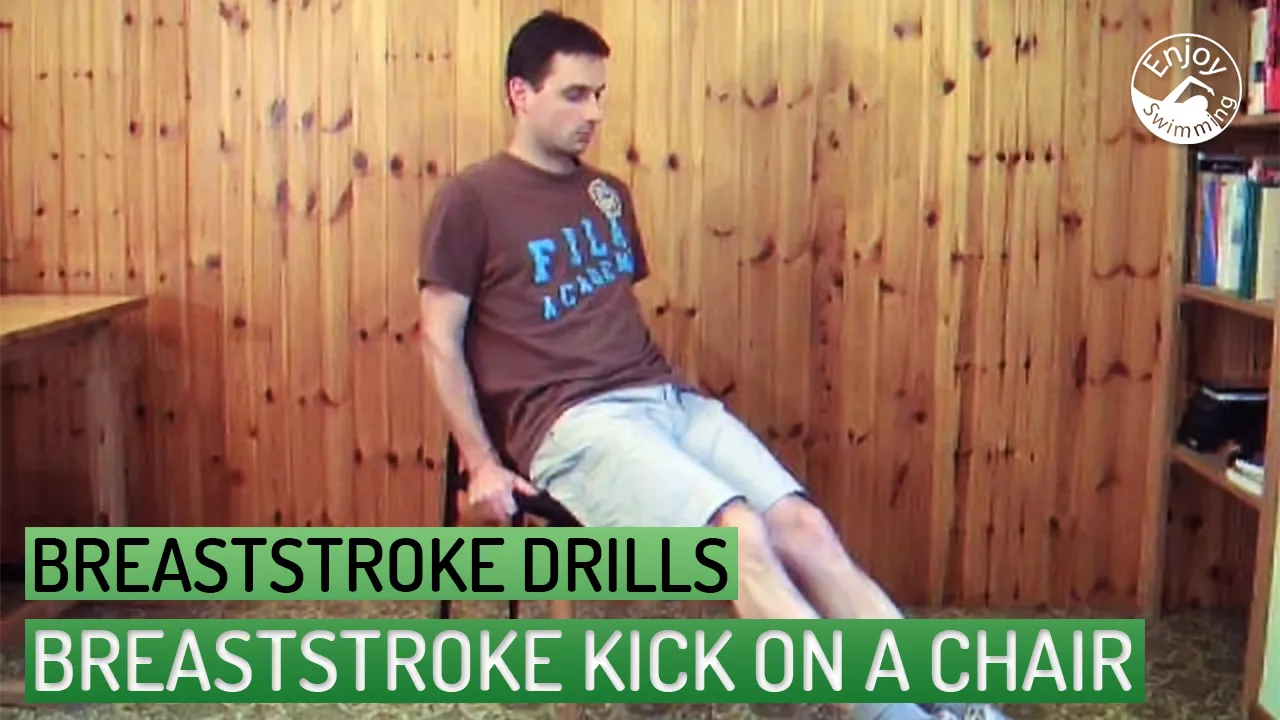The breaststroke kick is more technical than it may seem at first glance.
Therefore, learning the movements can sometimes be a little difficult.

To help you to learn this swimming technique, we have devised the following series of dry land exercises that you can practice at home at your own pace.
Standing Single Leg Kick
In this first dry land exercise, you learn to execute the different phases of the breaststroke kick, one leg at a time:
The initial position is simply standing upright with both feet close together and arms at your sides. Then execute the different phases of the kick with your right leg:
- Recovery: Bend your right knee, so that you bring your heel towards your buttocks. At the same time, flex your foot towards your shin (dorsiflexion).
- Catch: When your foot is close to the buttocks, raise your right leg sideways while keeping your knee bent and your foot in dorsiflexion.
- Outsweep: When you have raised your leg about 45°, extend your leg and point your foot/toes (plantar flexion). But keep your leg lifted sideways.
- Insweep: Bring your right leg back into the initial position at the end of the leg extension.
In the beginning, observe a slight pause between each phase. Afterwards execute all the kick phases’ in one fluid movement.
Repeat this a few times with your right leg, then switch to your left leg.
Breaststroke Kick On A Chair
In the next dry land exercise, you simultaneously rehearse the kick movements with both legs. You need a chair for this exercise:
Here are the drill instructions:
- Sit close towards the chair’s front edge.
- Grab the seat of the chair on the side with both hands.
- Extend your legs forward, lifting them about 5 inches above the ground.
- Point your feet.
Now practice the different phases of the kick like you did in the previous exercise. But your legs should now move simultaneously:
- Bend your knees and bring your feet towards the buttocks in dorsiflexion.
- Spread your legs apart while keeping your knees bent and your feet in dorsiflexion.
- Extend your legs and simultaneously point your feet.
- Finally bring your extended legs back together into their initial position.
Repeat this exercise a few times, at first slowly and then in one continuous movement.
Breaststroke Kick On The Floor
Now you will practice the leg movements in a position close to the one you are in while swimming breaststroke, in a prone position:
The starting position is as follows:
- Lie down on the floor on your stomach.
- Place your arms in front of you in a comfortable position.
- Extend your legs with feet pointed.
Now practice the breaststroke kick. It will most likely take a little bit of concentration as you are now turned downwards whereas in the previous exercise you were turned upwards.
This is an excellent coordination exercise! ;-)
Rehearsing the movements while lying on your stomach is also interesting because you can’t flex at your hips while bringing your feet towards the buttocks.
Instead you learn to correctly fold your lower legs onto your upper legs to bring your feet towards the buttocks. Using this technique in the water allows to decrease drag.
Conclusion
After having practiced the breaststroke kick on dry land you can start to practice it in the water.
By the way, besides being used in breaststroke, this swimming technique is also used in elementary backstroke and while treading water.
Have fun!
Learning Path for the Breaststroke
Below is an overview of our series of articles on learning the breaststroke. Each article in this series contains one or more drills that have to be mastered. The current article is highlighted:
Once you have gone through all the steps of this learning path, you should be able to swim breaststroke without any problems.
Good luck!

Frank
Sunday 27th of January 2019
Can you lie on your back, on an exercise pad, and practice the frog kick? Would this be helpful? Frank
Christophe
Sunday 27th of January 2019
Hi Frank,
It's difficult for me to visualize how you would be able to do the leg recovery while lying on your back on an exercise pad.
Would you care to explain?